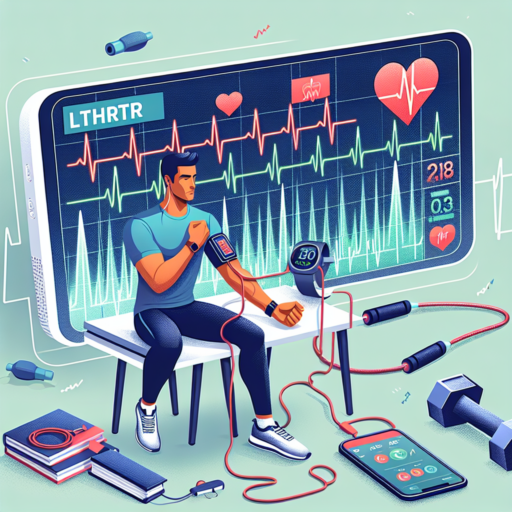What are the zones based on LTHR?
Understanding your Lactate Threshold Heart Rate (LTHR) is crucial for optimizing your training sessions. Zones based on LTHR are pivotal in categorizing your training intensity and ensuring that you’re not over or undertraining. These zones serve as a guide to help athletes and trainers structure their workouts effectively.
The Five Key LTHR Zones
In general, LTHR-based zones are divided into five categories. These are:
- Zone 1 (Active Recovery): Below 81% of LTHR, this zone promotes recovery and is easy on your body.
- Zone 2 (Endurance): Between 81% and 89% of LTHR, focusing on building aerobic endurance.
- Zone 3 (Tempo): Ranging from 90% to 93% of LTHR, this zone enhances your aerobic capacity without over-stressing your body.
- Zone 4 (Lactate Threshold): Spanning 94% to 99% of LTHR, it sharpens your race pace and improves lactate handling.
- Zone 5 (Aerobic Capacity): Above 100% of LTHR, this zone is where you push your limits to increase speed and power.
Each zone targets different physiological adaptations and training goals. Whether you’re aiming to build endurance, improve race performance, or recover, understanding and utilizing these zones can significantly enhance your training quality and outcome.
What is the LTHR heart rate?
The LTHR (Lactate Threshold Heart Rate) is a significant indicator in the realm of fitness and endurance training. It refers to the level of exertion at which lactate starts to accumulate in the bloodstream faster than it can be removed. Understanding your LTHR is crucial for athletes, particularly runners and cyclists, as it helps tailor training sessions to improve performance and efficiency.
Identifying your LTHR allows for the customization of workout zones, ensuring you train at the right intensity to stimulate physiological adaptations without overtraining or undertraining. It is determined through either structured field tests, lab tests, or wearable technology that monitors heart rate and performance metrics during exercise.
To effectively utilize LTHR in your training, it’s essential to first establish your own LTHR through testing, then apply this information to set up targeted training zones. These zones range from low intensity, ideal for building endurance, to high intensity, which improves power and speed. This strategy ensures that athletes can maximize their training time, focusing on specific areas for improvement based on their fitness goals.
No se han encontrado productos.
How do you calculate your LTHR?
Calculating your Lactate Threshold Heart Rate (LTHR) is a crucial step for athletes looking to optimize their training sessions. Understanding your LTHR can help you tailor your workouts to improve endurance and speed. This process involves a mix of practical testing and calculation to determine the heart rate at which lactate begins to accumulate in the blood.
Step-by-Step Testing Process
To calculate your LTHR, you’ll begin with a warm-up, followed by a time-trial test that’s best performed in a controlled environment, such as on a stationary bike or a treadmill. After warming up for 15 minutes, conduct a 30-minute time trial where you push yourself as hard as you can sustain for the duration. It’s crucial that this effort feels consistent; avoid starting too strong and fading or picking up speed towards the end. The objective is to simulate a race scenario where you’re maintaining your maximum sustainable effort.
During the last 20 minutes of your time trial, you should use a heart rate monitor to record your heart rate at one-minute intervals. The average of these values will represent your LTHR. This number is significant because it marks the threshold where lactate starts to accumulate, signaling the shift to more anaerobic exercise.
Understanding Your Results
Once you have your average heart rate from the last 20 minutes of your time trial, you’ve successfully calculated your LTHR. This figure is a key indicator of your cardiovascular fitness and helps in setting personalized heart rate zones for training. By basing your workout intensities on these zones, you can more effectively target improvements in endurance, speed, and overall performance. Remember, your LTHR can change over time with training, so it’s beneficial to retest every few months to adjust your training zones accurately.
What heart rate zone for easy run?
Finding the right heart rate zone for an easy run is crucial for maximizing the benefits of your training while ensuring you’re not overexerting yourself. This zone, often referred to as the fat-burning zone, is where you want your heart rate to be to improve your endurance without the strain of high-intensity workouts. It’s typically defined as 60-70% of your maximum heart rate (MHR), a range that promotes cardiovascular health and endurance by utilizing fat as the primary source of energy.
To accurately calculate your ideal heart rate for an easy run, first, determine your MHR, which can be roughly estimated using the formula 220 minus your age. From there, multiplying your MHR by 0.60 and 0.70 will give you the lower and upper bounds of your easy run heart rate zone. For example, a 30-year-old would have an MHR of approximately 190 beats per minute (BPM), making their easy run zone about 114 to 133 BPM.
Monitoring and staying within this zone during your runs is key. Using a heart rate monitor or smartwatch can help you track your heart rate in real-time, ensuring you’re in the correct zone for the desired effects. Training in this zone is particularly beneficial for beginners or those looking to enhance their endurance without the risk of injury associated with higher intensity workouts. Furthermore, consistently running in your easy run heart rate zone can aid in more efficient oxygen use, better fat metabolism, and overall improved cardiovascular fitness.




